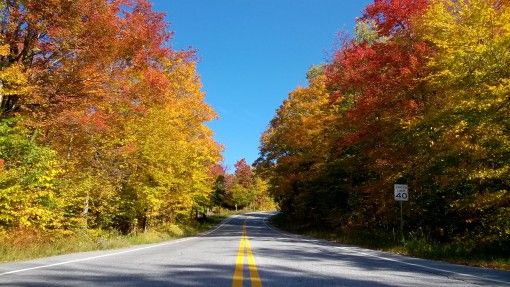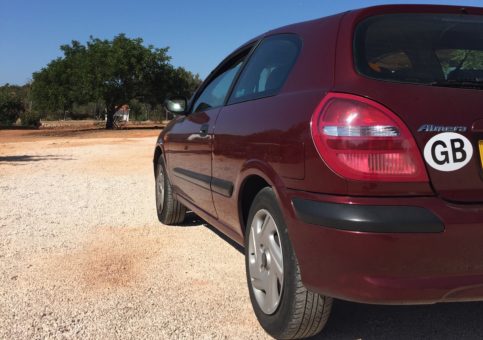27 Feb Road Trip Safety: Dos and Don’ts
Having returned from India, we’re now busy preparing for a three-month road trip through Europe. Starting in France, we’ll be driving our Nissan Qashqai down to Geneva for a holiday with Andrew’s parents, then continuing to Venice before heading west towards our favourite European country: Portugal.

Before we leave, there’s a list of road-trip related tasks to complete, including ordering a Crit’Air sticker for France and Spain’s ultra-low emission zones and making sure we have our car stocked with EU safety essentials like a warning triangle, high-vis vest, first aid kit and breathalyser. Of course, there’s plenty more to consider once we’re on the road; here’s a list of the top road trip safety dos and don’ts we’ll be bearing in mind on this adventure.
Dos:
Inspect your vehicle
Before hitting the road, we’ll conduct a thorough inspection of our vehicle. Luckily, my Dad is a mechanic, so that’s pretty helpful when getting our car ready to roll. Generally, we check the tyres, brakes, lights, and fluid levels. We’ll also make sure our spare tyre is in good condition and that we have all the necessary tools we need for changing a flat if we need to.
Plan your route
We like to have a rough route plan for our road trip in advance. Checking driving distances, road tolls and conditions helps us plot how much ground we can cover and where we need to stop overnight. Andrew uses Google Maps to plot a route and makes sure to download them offline in case we don’t have cell service.
Check your insurance
Before we head out on the road, we always check we have both car and travel insurance that covers our trip. In this case, our UK policy covers 90 days in Europe, so we don’t need to add anything else to the policy. We make sure to carry hard copies of our insurance documents in the glove box, as well as keep them safely saved on our laptops and hard drive.
Consider the costs
We like to have a rough idea of how much our road trip might cost before we begin, this really helps with the planning process. Compare the Market has an index that breaks down the kilometre distance and number of fuel refills required for popular road trip destinations like Route 66 and the Great Ocean Road, for example. By being prepared, you can reduce the risk of being caught out or going over budget.
 Obey traffic laws
Obey traffic laws
It should go without saying, but following traffic laws is a crucial part of any road trip. We always wear seatbelts and adhere to speed limits, traffic signs, and other rules of the road. It’s also worth looking up driving rules for the specific countries you’re visiting, for example we needed a vignette for driving on Slovenia’s and Austria’s motorways.
Compile an emergency kit
As well as our legally-required EU car safety kit, we like to pack an emergency kit for road trips. This includes essentials like a first aid kit, flashlight, jumper cables, blankets, water, and non-perishable snacks – just in case we break down or get stuck somewhere remote. When it comes to fuelling up, we make sure to do so regularly, especially if we’re heading somewhere more remote.
Check the weather
Depending on the season, weather can really affect your road trip. We found this out the hard way while travelling through North America in our RV, Maj during the winter. Even sticking to the southern states of the USA, we hit numerous winter storms that meant we couldn’t drive on the highway because of high winds. We always have a weather app on our phones to stay safe.
Don’ts:
Drowsy driving
We never drive when we’re tired; a study by the AAA Foundation for Traffic Safety found that between 16 and 21 percent of fatal crashes likely involved drowsy driving. To stay fresh, we break up our road trips with meal stops and overnight stays, never planning a day where we drive more than eight hours.
Overloading
Hands up all the over packers out there! If we’re heading out on an extended adventure, it can be tempting to cram the car with supplies, from extra clothes, if we’re travelling in the winter, to UK essentials we can’t easily get abroad (think Marmite, solid shampoo bars from Lush and my favourite type of loose-leaf Earl Grey tea). Bringing just the essentials limits strain on our vehicle and helps maintain our fuel economy.
 Ignoring warning signs
Ignoring warning signs
While driving our RV in Canada last year, the engine light came on the dash, and because we were out exploring the national parks, we weren’t able to get to a mechanic until several weeks later. By then, poor Maj was making a hell of a noise when we had to traverse hills – turns out, she was in dire need of a new fuel pump. Since then, we’ve been super-careful to listen out for strange vehicle noises and if the dreaded engine light comes on, we’ll immediately get it looked at.
Reckless and distracted driving
As we’ve found out the hard way, most recently on our India trip when our Uber driver crashed the car, some countries have a pretty reckless driving culture. We’re always on the alert for dangerous behaviours at home and abroad, from speeding to tailgating and aggressive overtaking. We try to minimise distractions while driving and never use our phones for anything but sat nav directions.
Do you have any top road trip safety tips?





No Comments